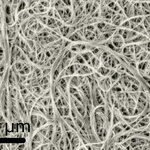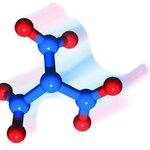Chemistry

Archimedes steps in again. The MacTutor tells us that “Archimedes considered his most significant accomplishments were those concerning a cylinder circumscribing a sphere, and he asked for a representation of this together with his result on the ratio of the two, to be inscribed on his tomb.” And one year after it was told us how to produce carbon spheres in relative abundance (at least, enough to buy a decent quantity from your laboratory chemical supplier), along comes Sumio Iijima telling us how to make cylinders. Helical microtubules of graphitic carbon
Sumio Iijima,…

When I was a lad, we were taught that carbon had two allotropes, graphite and diamond. Although they’re both covalently connected, in neither of these is there anything that one would regard as a ‘molecule’.
Carbon molecules were known, however, particularly the C2 molecule, but it was only found in hot places like carbon arc lamps and carbon-rich stars like La Superba. But in cooler places, such molecules will readily combine with each other to form soot. Red giant stars, in their second giant phase (known as the Asymptotic Giant Branch) tend to puff and pulsate, and…

A new study accepted for publication in Chemical Geology says deep saline groundwaters in South Africa's Witwatersrand Basin may have remained isolated for perhaps millions of years.
The Witwatersrand Basin covers approximately 400 kilometers, some of which is subcrop of the Witwatersrand Supergroup sedimentary and sub-ordinate volcanic sequences and is well-known for tourist expeditions to search for gold.The researchers found the noble gas neon dissolved in water in three-kilometer deep crevices and the unusual neon profile, along with the high salinities and some other unique chemical…

I love separation science, since
it amuses me no end. As the coffee stain still lurks at my desk, reading
through this article, the stain will be a mainstay at my laboratory. Okay, the
hygiene issues will linger. Scientists at Harvard, California and Stanford universities
have come up with use of coffee ring effect. A chromatography method that uses
the same physics as the coffee stain: It separates nanometer- and
micrometer-scale particles by size as a droplet dries.
Considering that coffee is a
colloidal suspension, when coffee droplets dry on a clean surface, the
evaporating liquid…

Being a follower of IYC 2011, I was completely aware of the goals and purpose of the events taking place and getting the coveted IYC tag and grants too. However, this one email made me rethink. Valentine's Day is around the corner and I was also aware of the fact that scientists are lovers too, but organizing an IYC 2011 event out of it was a plan that never even crossed my mind-even my wildest imagination would make me refrain from such issues, if any. I am already working out an event for IYC at our institute and this email changed my thought process completely. Pleasantly surprised to…

2011 is Chemistry's year, sharing its limelight with another international celebration - forests. The International Year of Chemistry (popularly abbreviated as IYC 2011) is an excellent window of opportunity for chemists, chemical educators, chemical scientists all over the globe. As the celebration involves sharing of ideas and later brainstorm them into understanding to a wider audience is already ongoing at various societies like the ACS, RSC and other related organisations.
IYC 2011 is a great opportunity to help the rest of the world understand the crucial role chemistry plays in…

Scientists are reporting the development of a new, ultra-light form of 'frozen smoke', the world's lightest solid material, and the new kind has amazing strength and an incredibly large surface area. The new "multiwalled carbon nanotube (MCNT) aerogel" could be used in sensors to detect pollutants and toxic substances, chemical reactors, and electronics components.
Lei Zhai and colleagues explain that aerogels made from silicon dioxide (the main ingredient in sand) and other material already are used as thermal insulation in windows and buildings, tennis rackets, sponges to clean…

Will your new year start with a BANG?
Well, it might, if you bring it in with this molecule. This is trinitramide, a compound newly synthesized at the Royal Institute of Technology (KTH) in Sweden. It has the formula N(NO2)3, and as such is the newest nitrogen oxide to be discovered.
As a chemist, I am into stinks and bangs. And NO2 groups are already associated with explosives, from traditional ones such as nitroglycerine and TNT, modern ones like Semtex, through to even more powerful chemical specialities such as the highly energetic heptanitrocubane.
This compound first…

Because of environmental problems with huge piles of plastic garbage, biodegradable plastics are still widely studied. Personally, I thought this was a relatively easy problem to solve because of today’s advancements in chemistry and technology. Many papers on thermoplastic starch, including those I used as references, are published no more than 4 years ago, suggesting that the problem of finding substitutes to petroleum based plastics is still an open and active area.
One of the most widely studied biodegradable plastic is thermoplastic starch (TPS) which is basically made of starch…

[note: I struggled with what category to put this in, perhaps there should be a new one called Complexity?]
One of the paradigms in complex adaptive systems thinking that has great explanatory power is the idea that there are distinct systems organized hierarchically in various levels of complexity. So, for instance, you can look at atoms as being a system at one level of organization, on top of which sits the next level of atomically bonded compounds (aka molecules), on top of which sits the next level of molecular reactions (e.g. chains of enzyme reactions), and so on. It’s well-understood…